您好,登錄后才能下訂單哦!
您好,登錄后才能下訂單哦!
這篇文章給大家分享的是有關SpringBoot與SpringCache概念是什么的內容。小編覺得挺實用的,因此分享給大家做個參考,一起跟隨小編過來看看吧。
首先我們知道jpa,jdbc這些東西都是一些規范,比如jdbc,要要連接到數據庫,都是需要用到數據庫連接,預處理,結果集這三個對象,無論是連接到mysql還是oracle都是需要用到這個三個對象的,這是一種規范,而SpringCache是一種作為緩存的規范,具體實現有redis,EhCahe等
1.pom.xml
<?xml version="1.0" encoding="UTF-8"?> <project xmlns="http://maven.apache.org/POM/4.0.0" xmlns:xsi="http://www.w3.org/2001/XMLSchema-instance" xsi:schemaLocation="http://maven.apache.org/POM/4.0.0 https://maven.apache.org/xsd/maven-4.0.0.xsd"> <modelVersion>4.0.0</modelVersion> <parent> <groupId>org.springframework.boot</groupId> <artifactId>spring-boot-starter-parent</artifactId> <version>2.6.3</version> <relativePath/> <!-- lookup parent from repository --> </parent> <groupId>com.yl</groupId> <artifactId>cache_redis</artifactId> <version>0.0.1-SNAPSHOT</version> <name>cache_redis</name> <description>Demo project for Spring Boot</description> <properties> <java.version>11</java.version> </properties> <dependencies> <dependency> <groupId>org.springframework.boot</groupId> <artifactId>spring-boot-starter-cache</artifactId> </dependency> <artifactId>spring-boot-starter-data-redis</artifactId> <artifactId>spring-boot-starter-web</artifactId> <artifactId>spring-boot-starter-test</artifactId> <scope>test</scope> </dependencies> <build> <plugins> <plugin> <groupId>org.springframework.boot</groupId> <artifactId>spring-boot-maven-plugin</artifactId> </plugin> </plugins> </build> </project>
2.application.properties
# redis的配置 spring.redis.host=192.168.244.135 spring.redis.port=6379 spring.redis.password=root123
3.實體類
package com.yl.cache_redis.domain;
import java.io.Serializable;
public class User implements Serializable {
private Integer id;
private String username;
private String password;
public Integer getId() {
return id;
}
public void setId(Integer id) {
this.id = id;
}
public String getUsername() {
return username;
}
public void setUsername(String username) {
this.username = username;
}
public String getPassword() {
return password;
}
public void setPassword(String password) {
this.password = password;
}
@Override
public String toString() {
return "User{" +
"id=" + id +
", username='" + username + '\'' +
", password='" + password + '\'' +
'}';
}
}4.service
package com.yl.cache_redis;
import com.yl.cache_redis.domain.User;
import org.springframework.cache.annotation.Cacheable;
import org.springframework.stereotype.Service;
@Service
public class UserService {
@Cacheable(cacheNames = "u1") //這個注解作用就是將方法的返回值存到緩存中
public User getUserById(Integer id) {
System.out.println("getUserById:" + id);
User user = new User();
user.setId(id);
user.setUsername("root");
user.setPassword("root");
return user;
}
}5.主程序,加上開啟緩存的注解
package com.yl.cache_redis;
import org.springframework.boot.SpringApplication;
import org.springframework.boot.autoconfigure.SpringBootApplication;
import org.springframework.cache.annotation.EnableCaching;
@SpringBootApplication
@EnableCaching //開啟緩存功能
public class CacheRedisApplication {
public static void main(String[] args) {
SpringApplication.run(CacheRedisApplication.class, args);
}
}6.測試
6.1)userservice沒加@Cacheable注解時
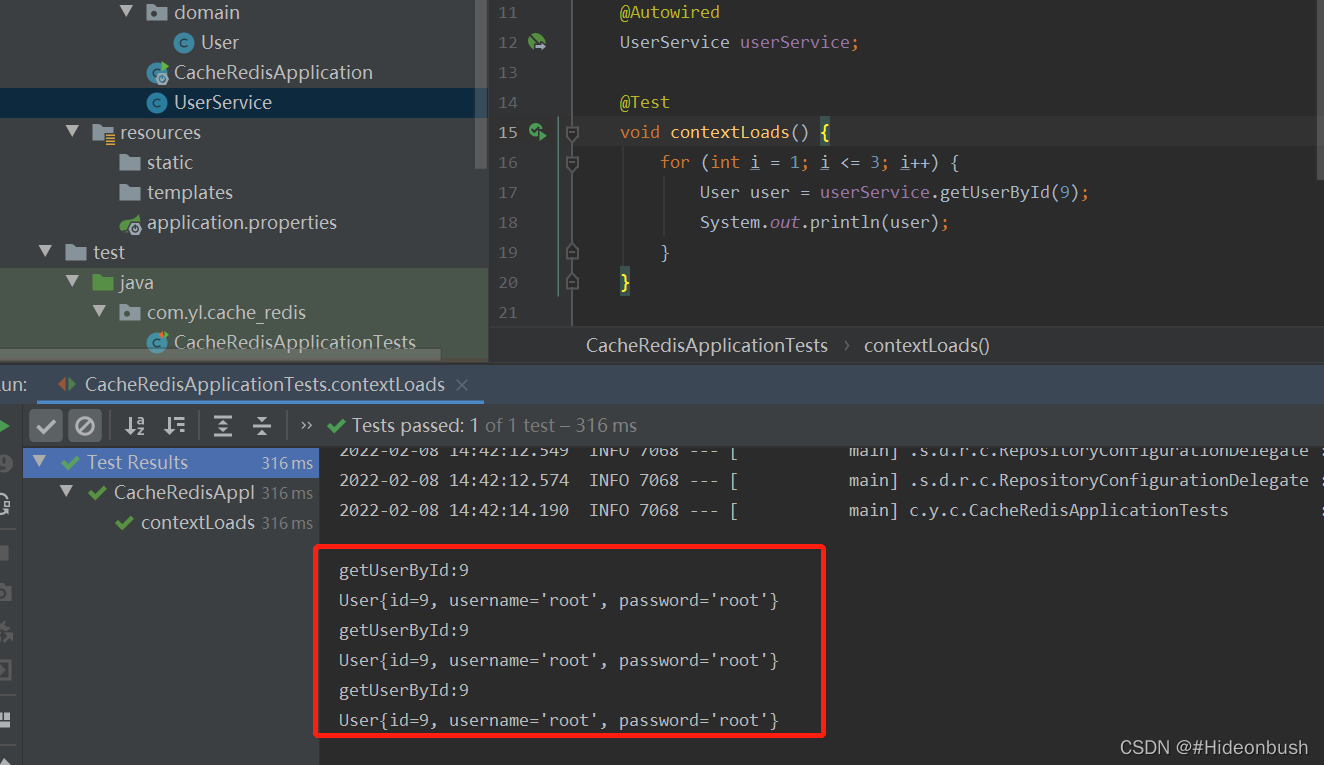
6.2)userservice加@Cacheable注解后,發現sevice中的方法只調用了一次
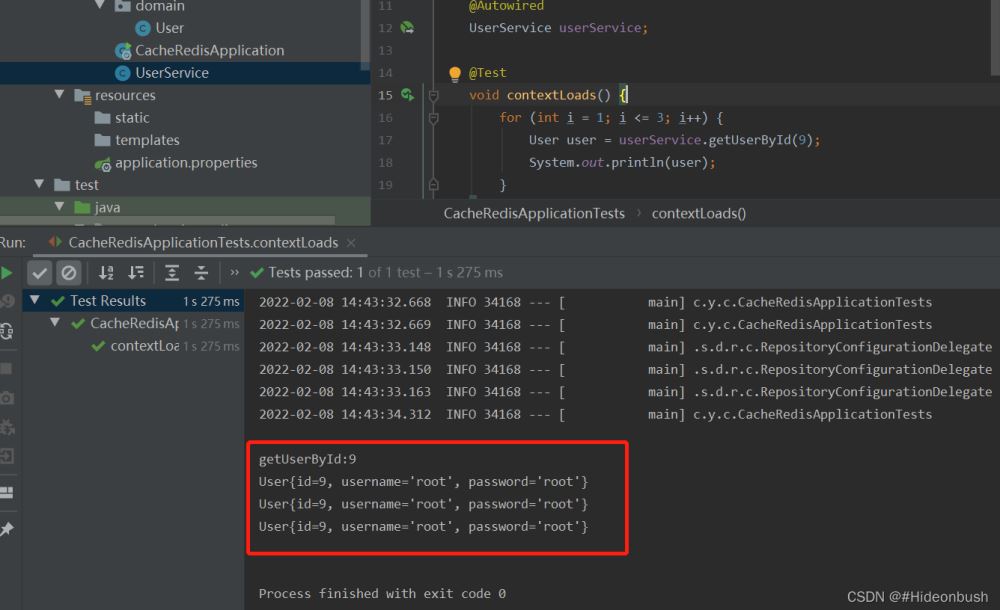
6.3)在redis中也可以看到緩存中有數據,key為定義好的cacheNames+::+方法的參數

1.SpringCache默認使用cacheNames和方法中的參數結合組成key的,那么如果有多個參數呢?它又是如何組成key的呢?我們可以指定key嗎?
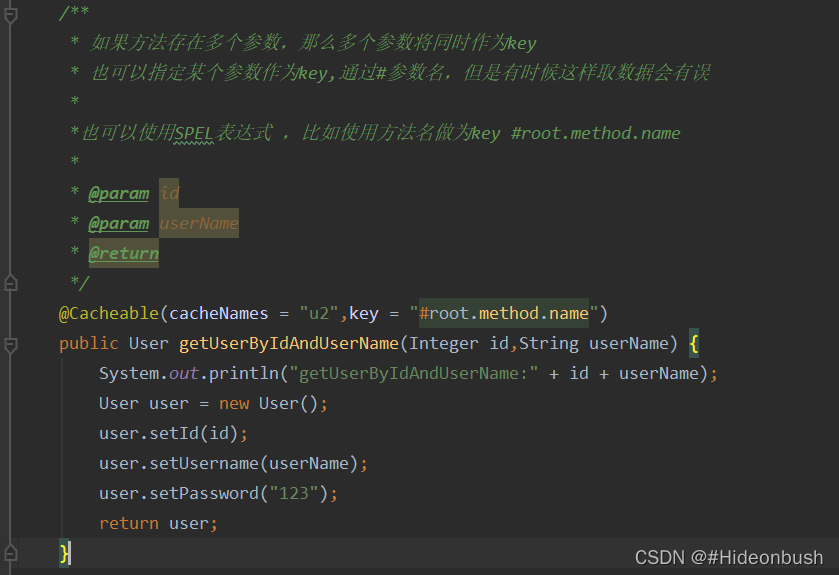
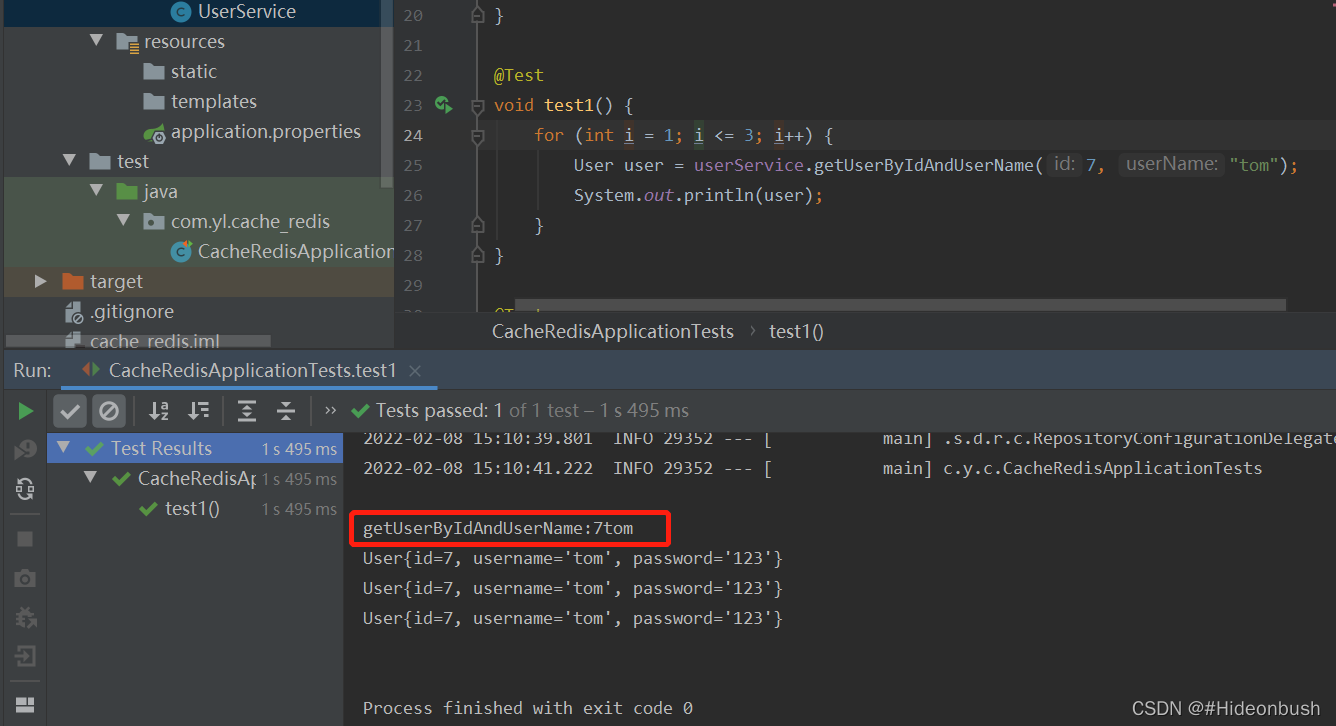

2.如何自定義key呢?
1)自定義key
package com.yl.cache_redis;
import org.springframework.cache.interceptor.KeyGenerator;
import org.springframework.stereotype.Component;
import java.lang.reflect.Method;
import java.util.Arrays;
@Component
public class MyKeyGenerator implements KeyGenerator {
@Override
public Object generate(Object target, Method method, Object... params) {
return target.toString() + ":" + method.getName() + ":" + Arrays.toString(params);
}
}2)測試
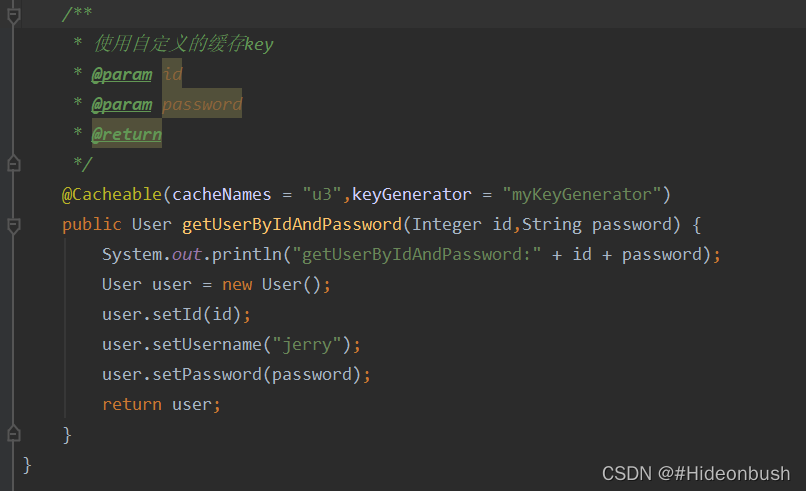
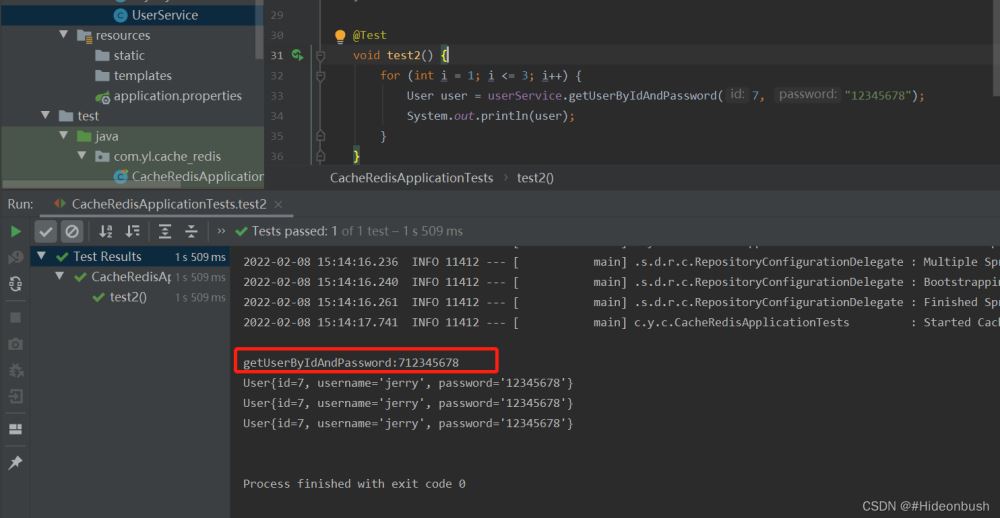

1.使用@CachePut注解來更新,注意:@CachePut中的key要和@Cacheable中的key一樣,否則更新不了!
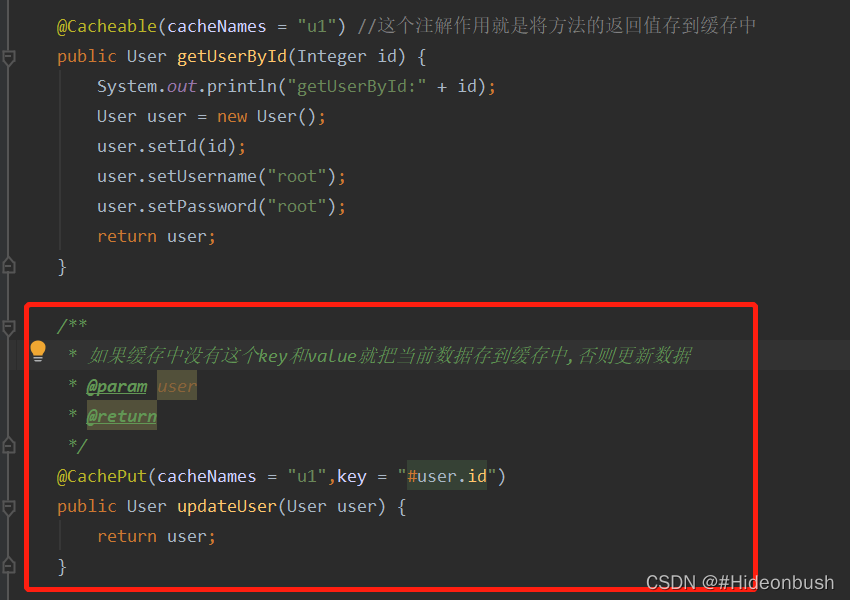

1.使用@CacheEvict注解,主要key和要@Cacheable中的key一致
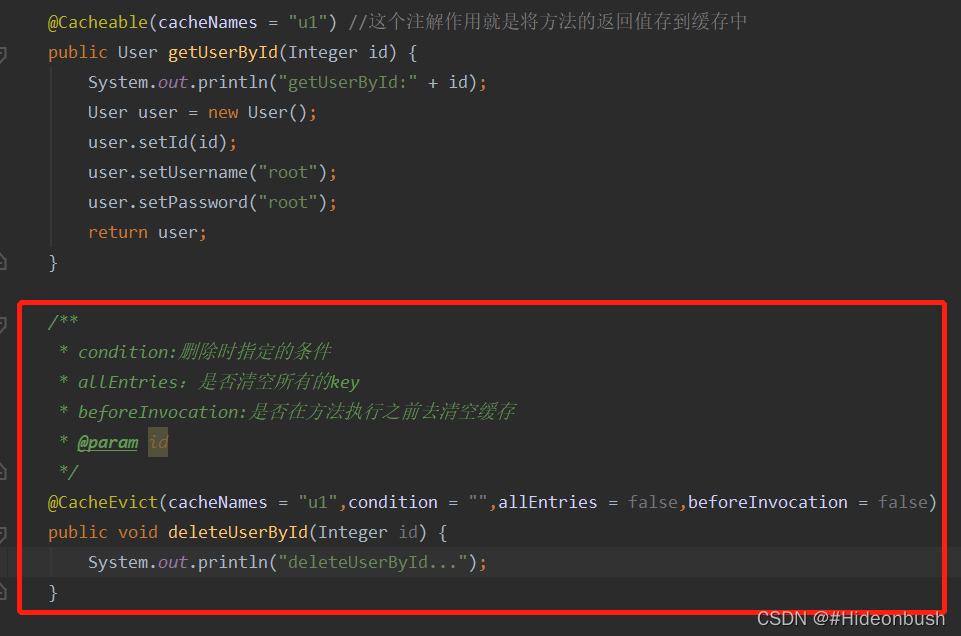
2.測試
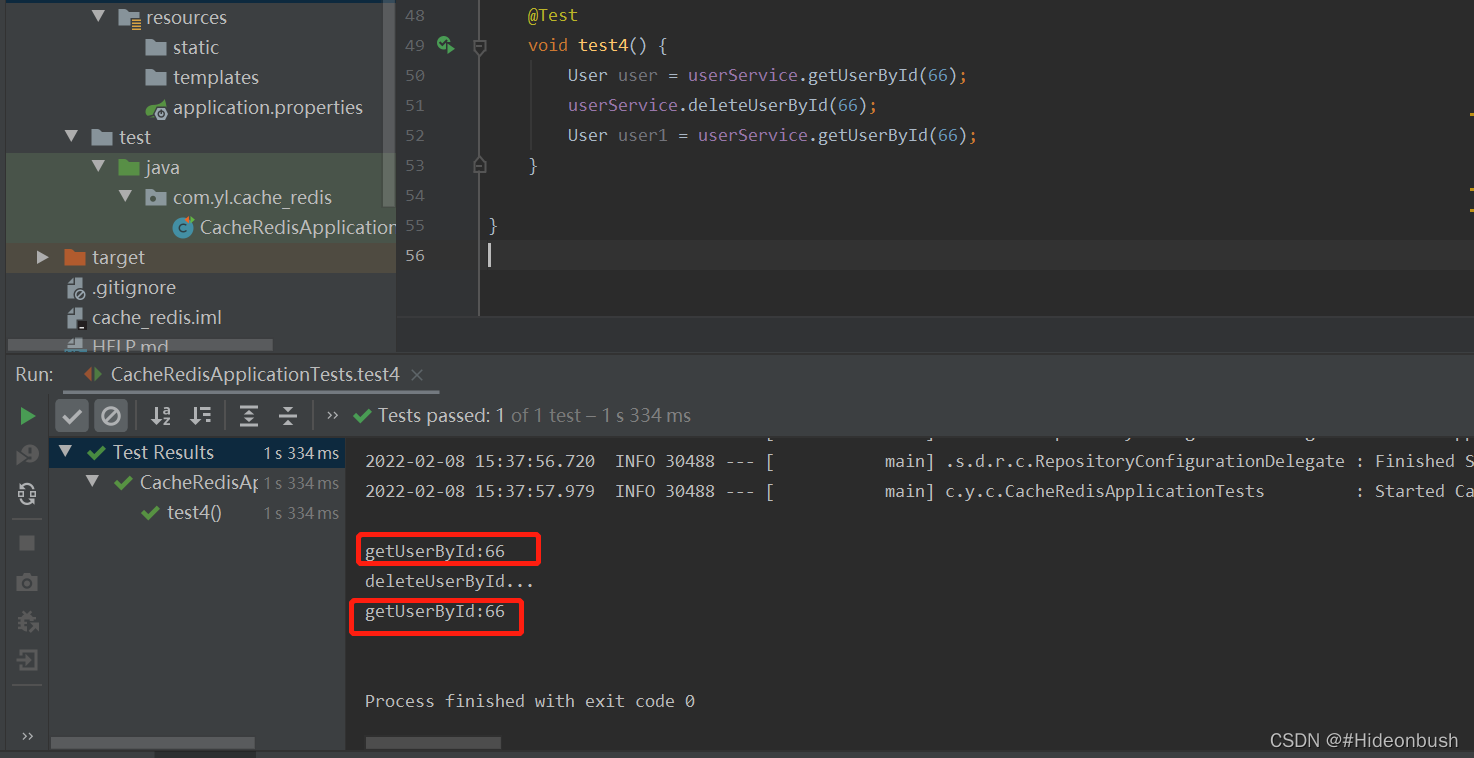
1.@Caching注解,可以組合多個注解
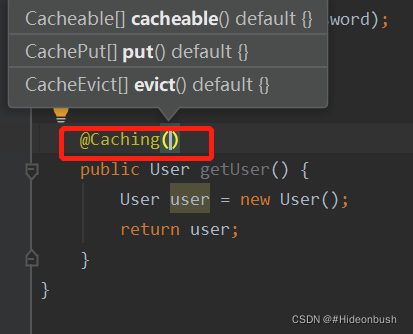
2.@CacheConfig注解

1.pom.xml
<?xml version="1.0" encoding="UTF-8"?> <project xmlns="http://maven.apache.org/POM/4.0.0" xmlns:xsi="http://www.w3.org/2001/XMLSchema-instance" xsi:schemaLocation="http://maven.apache.org/POM/4.0.0 https://maven.apache.org/xsd/maven-4.0.0.xsd"> <modelVersion>4.0.0</modelVersion> <parent> <groupId>org.springframework.boot</groupId> <artifactId>spring-boot-starter-parent</artifactId> <version>2.6.3</version> <relativePath/> <!-- lookup parent from repository --> </parent> <groupId>com.yl</groupId> <artifactId>ehcache</artifactId> <version>0.0.1-SNAPSHOT</version> <name>ehcache</name> <description>Demo project for Spring Boot</description> <properties> <java.version>11</java.version> </properties> <dependencies> <dependency> <groupId>org.springframework.boot</groupId> <artifactId>spring-boot-starter-cache</artifactId> </dependency> <artifactId>spring-boot-starter-web</artifactId> <artifactId>spring-boot-starter-test</artifactId> <scope>test</scope> <groupId>net.sf.ehcache</groupId> <artifactId>ehcache</artifactId> <version>2.10.6</version> </dependencies> <build> <plugins> <plugin> <groupId>org.springframework.boot</groupId> <artifactId>spring-boot-maven-plugin</artifactId> </plugin> </plugins> </build> </project>
2.實體類
package com.yl.ehcache.model;
import java.io.Serializable;
public class User implements Serializable {
private Integer id;
private String username;
private String password;
public Integer getId() {
return id;
}
public void setId(Integer id) {
this.id = id;
}
public String getUsername() {
return username;
}
public void setUsername(String username) {
this.username = username;
}
public String getPassword() {
return password;
}
public void setPassword(String password) {
this.password = password;
}
@Override
public String toString() {
return "User{" +
"id=" + id +
", username='" + username + '\'' +
", password='" + password + '\'' +
'}';
}
}3.service
package com.yl.ehcache.service;
import com.yl.ehcache.model.User;
import org.springframework.cache.annotation.CacheEvict;
import org.springframework.cache.annotation.Cacheable;
import org.springframework.stereotype.Service;
@Service
public class UserService {
@Cacheable(cacheNames = "user")
public User getUserById(Integer id) {
System.out.println("getUserById()...");
User user = new User();
user.setId(id);
user.setUsername("root");
user.setPassword("root");
return user;
}
@CacheEvict(cacheNames = "user")
public void delete(Integer id) {
System.out.println("delete");
}4.主程序
package com.yl.ehcache;
import org.springframework.boot.SpringApplication;
import org.springframework.boot.autoconfigure.SpringBootApplication;
import org.springframework.cache.annotation.EnableCaching;
@SpringBootApplication
@EnableCaching
public class EhcacheApplication {
public static void main(String[] args) {
SpringApplication.run(EhcacheApplication.class, args);
}
}5.ehcache.xml
<ehcache> <diskStore path="java.io.tmpdir/shiro-spring-sample"/> <defaultCache maxElementsInMemory = "1000" eternal = "false" timeToIdleSeconds = "120" timeToLiveSeconds = "120" overflowToDisk = "false" diskPersistent = "false" diskExpiryThreadIntervalSeconds = "120"/> <cache name = "user" maxElementsInMemory = "1000" eternal = "false" overflowToDisk = "true" diskPersistent = "true" diskExpiryThreadIntervalSeconds = "600"/> </ehcache>
6.測試
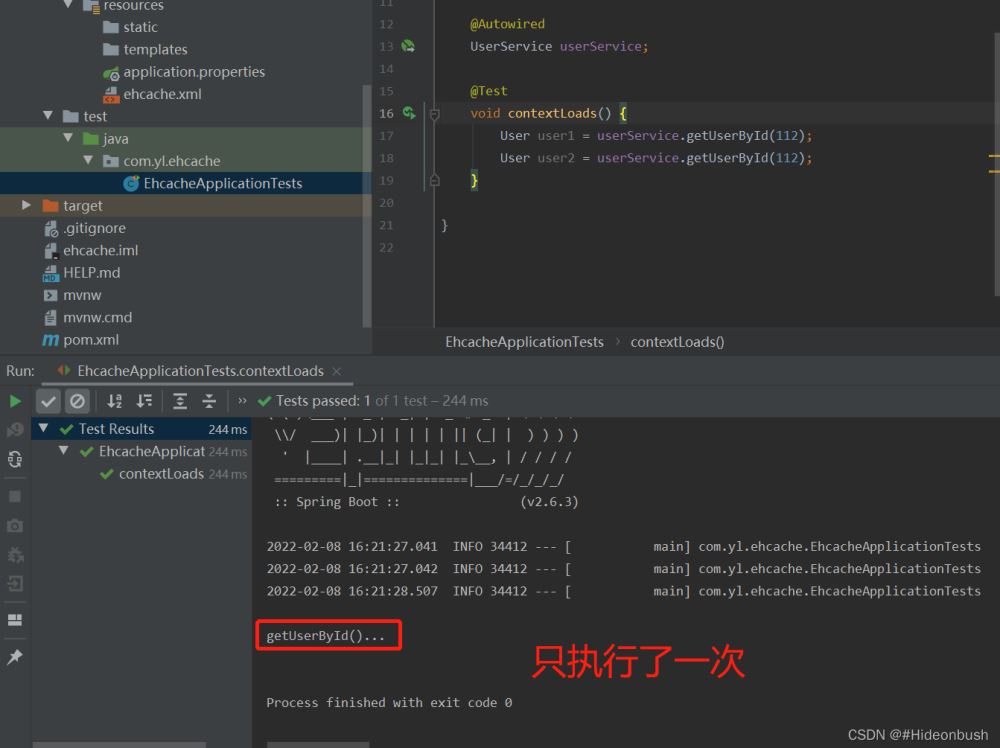
感謝各位的閱讀!關于“SpringBoot與SpringCache概念是什么”這篇文章就分享到這里了,希望以上內容可以對大家有一定的幫助,讓大家可以學到更多知識,如果覺得文章不錯,可以把它分享出去讓更多的人看到吧!
免責聲明:本站發布的內容(圖片、視頻和文字)以原創、轉載和分享為主,文章觀點不代表本網站立場,如果涉及侵權請聯系站長郵箱:is@yisu.com進行舉報,并提供相關證據,一經查實,將立刻刪除涉嫌侵權內容。